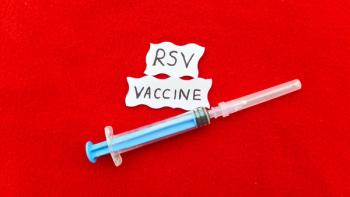
5 Drug Spending Trends to Watch
Total spending on prescription drugs in the United States on a net price basis is expected to reach up to $400 billion by 2020, a new forecast suggests.
Total spending on prescription drugs in the United States on a net price basis is expected to reach up to $400 billion by 2020, a new forecast suggests.
IMS Health recently highlighted factors likely to influence future drug spending patterns in a report called “Medicines Use and Spending in the US: A Review of 2015 and Outlook to 2020.”
According to the report, a total of 4.4 billion prescriptions were dispensed in the United States last year. Controlling for marketplace variables, the data provided insight into areas where US health stakeholders can expect to see growth and decline in spending over the next 4 years.
Here are 5 drug spending trends to watch:
1. New drug launches will drive growth in brand-name medication spending.
Of the $282 billion projected growth in spending on brand-name drugs between 2015 and 2020, $91 billion will stem from new medication launches—with 25% of it coming from oncology alone, IMS Health forecasts.
There are currently 2320 novel products in the late-phase development pipeline, and IMS Health predicts that 43 to 49 of them will launch annually over the next 5 years.
“Spending on new brands will continue at near-historic levels,” stated IMS Health senior vice president Murray Aitken in a press release.
2. Blockbuster drugs losing patent protection may shift market dynamics.
Nearly 9 of every 10 prescriptions filled is for a generic medication, and several highly-prescribed
How generic versions of these blockbusters will be priced still remains to be seen, but the average price of a generic can be as much as 80% to 85% lower than its patented brand-name counterpart.
“The impact of patent expiries, while higher in absolute dollars in the next 5 years, will be lower in percentage contribution than the past five years,” according to the IMS Health report.
Discussions about generic drug pricing will likely become increasingly heated as the
3. Diabetes drugs will continue to lead traditional spending trends.
In its 2015 drug trend report, pharmacy benefits manager (PBM) Express Scripts said the unit cost of diabetes medications would continue to rise because of the lack of available generics in the therapeutic class.
Invokana (canagliflozin) and Janumet (sitagliptin/metformin) in particular drove this spending trend in 2015 through increases in both utilization and unit cost.
According to the US Centers for Disease Control and Prevention, about 29.1 million individuals in the United States had diabetes in 2014, and that number is
“As type 2 diabetes progresses, patients may require more than 1 therapy to adequately control the disease,” Express Scripts noted. “Many of these therapies have been merged into new combination products that entered the market in 2014 and 2015. As patients switch from older regimens that require multiple pills per day to the new combination products, increased spend is anticipated, since these combination therapies are branded.”
4. Pain and inflammation drugs won’t be far behind diabetes.
“Despite the additional generic availability in this class, 2 branded drugs led spend this year: Lyrica (pregabalin) and the reformulated tamper-resistant, extended-release form of oxycodone (OxyContin),” Express Scripts explained.
A generic version of
Express Scripts further reported that abuse-deterrent formulations (ADF) for opioids will keep spending in the therapeutic category high.
“Reformulated tamper-resistant or abuse-deterrent opioids, such as the No. 2 drug [in spend] Oxycontin, are only available as branded therapies. ADF opioids are typically much more expensive than non-ADF alternatives,” the PBM wrote. “Additionally, the new formulations give years of extra patent protection to the brand manufacturer.”
5. Spending on specialty medications across several disease states will continue to grow.
Spending on specialty drugs doubled between 2010 and 2015, contributing to more than two-thirds of overall spending on prescription medications in the same time frame.
Going forward, about 40% of total global growth in drug spending will stem from specialty medications, primarily in the oncology, autoimmune, respiratory, antiviral, and immunosuppressant areas.
“Over the next 3 years, trend for the oncology class will continue to increase at approximately 20% annually,” Express Scripts forecasted. “As more patients survive initial cancer treatment, utilization will increase as these patients may need maintenance therapy or treatment for recurring disease.”
Express Scripts also expected treatments for hemophilia and other bleeding disorders to see “double-digit increases” in annual spending through 2018.
“The challenge of balancing access and the cost of care in an era of innovative but more expensive treatments [will] continue as a theme across our health care system,” Aitken stated.
Newsletter
Stay informed on drug updates, treatment guidelines, and pharmacy practice trends—subscribe to Pharmacy Times for weekly clinical insights.




















































































































































































































